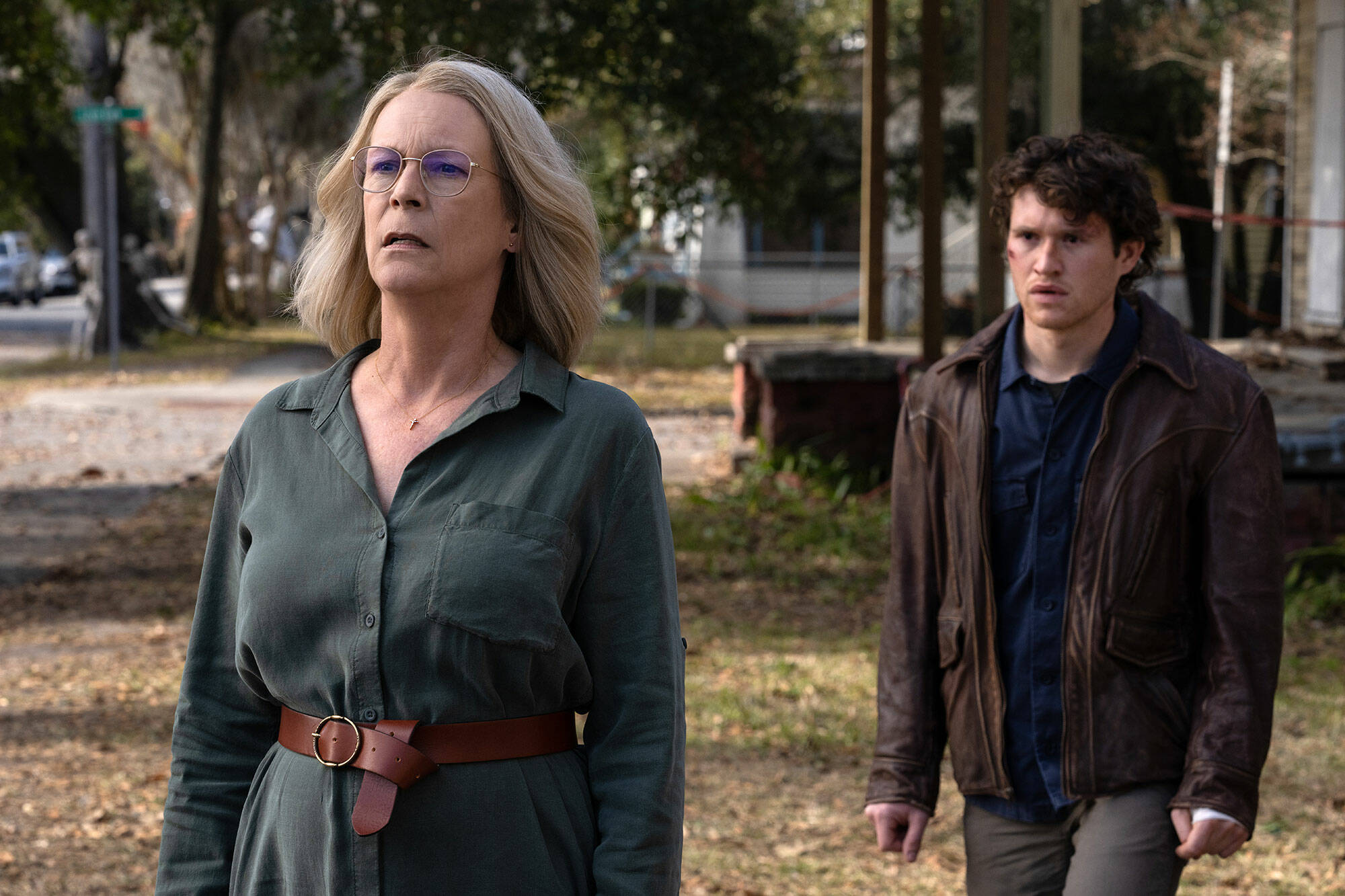In 2021, “Halloween Kills” ended with iconic horror villain Michael Myers and survivor Laurie Strode looking out at one another across a bloodied Haddonfield, Illinois. Promotional material for the recently released “Halloween Ends” teases the end of their “saga,” a final battle ending the story that began with the original “Halloween” in 1979.
The film isn’t about Michael and Laurie killing one another. Instead, it’s about a town dealing with the aftermath of Myers’ reign of terror. It’s about paranoia and trauma, evil within instead of without. It largely sidelines the original heavyweights in favor of a new character, Corey.
During a short prologue sequence, we see Corey’s life ruined in a horrific accident. During the film, set three years later — four years after “Kills” — Corey is tormented by the town’s residents, unable to live a happy life with eyes following him everywhere.
The film draws a distinction between two shapes of evil, external and internal. External is, of course, Michael, a being that is “other,” a monster lurking outside the community. Corey is internal, twisted by the pain of the town into a monster indistinguishable from Michael, except that he walks the streets of Haddonfield looking like “a good kid.” Between sequences of him committing atrocities, we see him smiling, going to work and spending time with friends.
Multiple characters describe looking at Corey as he transforms and seeing a stranger; Laurie sees the same eyes she’s seen under Michael’s mask.
This concept is interesting. Each film in the modern “Halloween” trilogy has been about what the lingering infection of trauma can do. In 2018’s “Halloween,” we see Laurie isolated, her family torn. In “Kills,” the people of Haddonfield are transformed into a zealous mob that claims innocent life. In “Ends,” we see the creation of a new monster.
Unfortunately, the execution of the idea falls short. Corey’s arc feels rushed, his relationship with Laurie’s daughter Allyson also rushed. An eleventh-hour twist is thrown out only moments later. Corey would have been better served being introduced earlier in the trilogy, rather than stapling his origin into a disconnected prologue to “Ends.”
For many, that will reflect especially poorly on the film as a whole when it was marketed as the thrilling conclusion to a decadeslong conflict, starring two iconic characters. The vast majority of the film is spent with Corey and Allyson, Michael not being introduced until around 40 minutes in. The cliffhanger ending of “Kills” doesn’t beget Laurie baking pies and writing a memoir; nor Michael just hanging out in the sewer for four years.
In the final moments of the film, when Laurie and Michael do reunite, it’s electric. But it may be too little too late.
“Halloween Ends” is a fine film, though perhaps ultimately forgettable. It is refreshingly final in the conclusion to its story, without any sort of loose thread or sequel tease to put us back in theaters in a couple of years. I liked it a lot better than “Kills,” but it didn’t reach the heights of 2018’s reboot.
“Halloween Ends” will be playing this weekend at Kenai Cinemas and Orca Theater, and is also available streaming via Peacock. Check showtimes and get tickets at catheaters.com and orcatheater.com.
Reach reporter Jake Dye at jacob.dye@peninsulaclarion.com.

